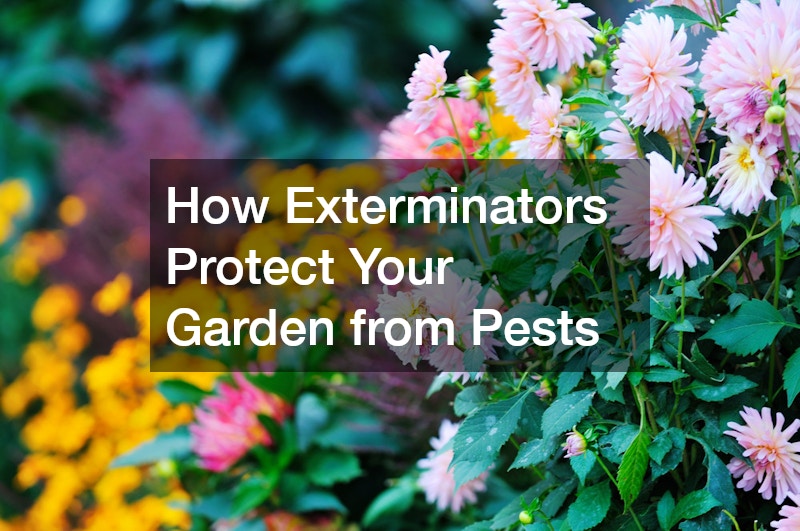In this article, we will explore the essential role of exterminators in safeguarding your garden from pests. We will address the most common concerns and questions regarding pest control in gardening, highlighting the importance of professional intervention and techniques. Gardens can be a haven for various types of pests that threaten the health and vitality of plants, making it crucial for gardeners to understand the need for professional pest management.
Understanding the intricacies of pest control can not only enhance the aesthetic appeal of your garden but also promote its sustainability. By delving into the functions of exterminators, we aim to provide a comprehensive overview that clarifies the value of their expertise in maintaining a vibrant garden environment.
What Types of Pests Do Exterminators Target in Gardens?
Insects such as aphids and spider mites can reproduce rapidly and, if left unchecked, will devastate plant foliage and impede growth. Beetles, including the notorious Japanese beetle, can wreak havoc on a wide variety of plants, making them a significant concern for any gardener. Moreover, larger animals like rabbits and deer can pose a formidable threat, as they might nibble away at young seedlings or tender fruit, causing irreparable damage.
Exterminators are trained to recognize the specific signs associated with these pests, allowing for timely and effective intervention. For instance, an infestation of aphids is often signaled by curled leaves and a sticky residue left on plants, which may deter beneficial insects. When faced with larger pests, exterminators may look for signs of munching on plants, tracks in the soil, or even droppings that betray their presence. By understanding how these pests operate and the types of damage they inflict, exterminators can formulate a strategy tailored to the unique challenges presented by each pest type.
Additionally, it’s important to recognize that not all pests are harmful; some insects play a beneficial role in the ecosystem. Pollinators like bees contribute positively to plant health by facilitating reproduction, while predatory insects such as ladybugs help control harmful pests. This nuance emphasizes the need for exterminators to adopt an integrated pest management approach that focuses not only on elimination but also on fostering a balanced garden ecosystem. Therefore, the expertise of exterminators is essential in distinguishing between harmful and beneficial organisms, ensuring that interventions minimize negative impacts on the environment.
How Do Exterminators Assess Pest Infestations?
Accurate assessment is the cornerstone of effective pest management, which often begins with a comprehensive inspection of the garden. Exterminators typically start by looking for signs of infestation, such as damaged plants, visible pests on the leaves, and any droppings or nests that indicate larger wildlife issues. Properly diagnosing the situation is vital to understanding the scale of the problem and the best course of action.
In addition to visual inspections, exterminators may employ various tools and techniques such as traps and baits to gauge pest populations. For example, sticky traps can capture insects, while bait stations placed strategically can determine the presence and activity levels of larger pests like rodents. These methods not only help confirm the type of pests in the garden but also reveal the extent of their populations, providing contextual information essential for determining the most suitable treatment and control methods.
What Methods Do Exterminators Use for Pest Control?
Chemical treatments involve the use of pesticides that effectively eliminate a broad spectrum of pests but must be applied with care to avoid harming beneficial organisms in the garden. Exterminators are trained to select the right chemicals based on the situation and to apply them in a manner that minimizes environmental impact while achieving the desired results.
On the other hand, organic solutions are gaining popularity among gardeners who prefer environmentally friendly approaches. Exterminators may use natural pesticides derived from plants, such as neem oil or diatomaceous earth, to target specific pests while preserving the delicate balance of the ecosystem. These solutions often take longer to achieve visible results yet are highly effective over time, making them an attractive option for sustainable gardening.
When Should You Call an Exterminator for Your Garden?
One of the most obvious signs that an exterminator should be called is visible damage to plants, which may appear as wilting, discoloration, or physical bite marks. When plants display such distress signals, it’s crucial to assess whether the damage is due to pests or other factors such as disease or nutrient deficiencies.
Another indication that it might be time to consult an exterminator is the sudden surge in pest populations. If you notice an unusual increase in insects or rodents despite regular garden maintenance, this could signal an underlying issue that needs professional attention. Rapid pest proliferation can often lead to a higher degree of damage and more complex infestations. Thus, recognizing and acting on this warning sign can save your garden from future complications.
Understanding how exterminators protect your garden from pests is crucial for maintaining a healthy and thriving green space. By addressing common questions and concerns, we hope to empower gardeners to consider professional pest control when necessary. With the ever-evolving challenges posed by pests in gardens, the expertise of exterminators provides invaluable support in ensuring plants remain vibrant and productive, fostering an environment where both gardeners and nature coexist harmoniously. Regular assessments, proactive pest management strategies, and educated decisions will lead to a flourishing garden that stands resilient against pest threats.



